More information on legislation
1. PROTECTIVE CLOTHING. GENERAL REQUIREMENTS. EN ISO 13688:2013
The protective clothing substitutes or covers personal clothing and is designed to provide protection against one or more hazards. This standard governs the general requirements for safety, ergonomics, aging, size designation, markings and information that the manufacturer must provide.
2. HIGH VISIBILITY SIGNALLING CLOTHING. EN ISO 20471:2013
High visibility clothing aims to make the user more visible to drivers of vehicles or other mechanised equipment under any daylight conditions or in headlights in darkness. The use of a high visibility garment does not guarantee that the user will be visible in all conditions. High visibility clothing falls into three different classes depending on the minimum surfaces of visible material. See table below for more information on each classification.
The minimum surface (in m2)

CLASS 1
The minimum surface (in m2) required for the visible material is 0.14 of background material, 0.1 of retroreflective material and 0.2 of combined material. It is used for activities which allow the user to be seen completely and without any doubt by approaching vehicles. There must be sufficient distance between the worker and any traffic, the latter not exceeding speeds of 40km/h. (24.9mph)
CLASS 2
The minimum surface (in m2) required for the visible material is 0.5 of background material, and 0.13 of retroreflective material. It is used in situations where greater visibility is needed in bad weather or in situations where workers are completing tasks which diverts the attention of any oncoming traffic, or requires them to be in close proximity to oncoming vehicles travelling at speeds greater than 40km/h (24.9mph)
CLASS 3
The minimum surface (in m2) required for the visible material is 0.8 of fluorescent material and 0.2 of retroreflective material. It is used by workers who are exposed to very dangerous situations and who carry out tasks with a high workload, in adverse weather conditions, and near traffic exceeding 80km/h (49.7mph).
The garments bear the following pictogram:
X level or protection class.
3. WEATHER PROTECTION CLOTHING EN ISO 343:2004
Standard EN 343 applies to materials and seams of clothing to protect against weather conditions in the possible combination of rain, mist, snow, and soil humidity.
Standard EN343 includes two levels, both with values from 1-3, with greater efficiency indicated by a higher number of both values.
Resistance to water vapour: the standard stipulates the tests to measure how well the fabric repels water vapour, which represents the resistance to perspiration evaporation from the surface of the skin. The higher the evaporative resistance, the lower the breathability. This value is used to classify the PPE into one of three classes, which go from 1 to 3 (least to most breathable).
Resistance to water penetration: the standard stipulates the water pressure that the exterior material and seams are subjected to, obtaining the resistance to water penetration, subsequently using this value to classify the PPE into one of three classes, which go from 1 to 3 (least to most resistant).
The garments bear the following pictogram:
X Resistance to water penetration
Y Resistance to water vapour
4. HEAT-PROOF AND FLAME-RESISTANT PROTECTIVE CLOTHING. EN ISO 11612:2010
All clothing designed and manufactured in accordance with the UNE-EN ISO 11612 standard is Category II, except the garments designed and manufactured for use in hot environments with effects comparable to those in an ambient temperature of 100º C or higher, which will be Category III, with or without infrared radiation, flames or large projectiles of fused materials.
The protective clothing that meets this European standard is designed to protect workers from brief contact with flames and at least one type of heat. This heat can be convective, conductive or radiant heat, molten metal splashes, or a combination of them.
All garments that comply with the EN ISO 11612:2008 standard must be marked with codes to indicate behaviour in the presence of flames (A1 and/or A2) and at least one additional code to indicate the type of heat (B, C, D, E, or F) followed by a number which indicates the level of benefit reached.
The garments bear the following pictogram:
A – Limited flame spread
B – Convective heat resistant
C – Radiant heat resistant
D – Molten aluminium splashes resistant
E – Molten iron splashes resistant
F – Contact heat resistant
5. PROTECTIVE CLOTHING. ELECTROSTATIC PROPERTIES. EN ISO 1149-5:2008
This European standard specifies electrostatic requirements and testing methods for protective garments that dissipate static electricity that can cause a fire. The demands are not sufficient for oxygen-enriched flammable atmospheres. This European standard is not applicable for protection against electric stress.
The garments bear the following pictogram:
6. PROTECTIVE CLOTHING USED DURING SOLDERING AND RELATED PROCESSES. EN IS0 11611:2007
This standard establishes the minimum essential safety requirements and testing methods for protective clothing that must be worn during soldering and related processes with comparable risks.
This type of protective clothing is intended to protect the user against splashes (small droplets of molten metal), short-term contact with flames, radiant heat from the arc, and it minimises the possibility of brief electric shock from accidental contact with electric current of voltages of up to approximately 100 V dc in normal welding conditions.
The garments bear the following pictogram:
This standard has the following two classes:
CLASS 1 – protection against welding techniques and less dangerous situations which cause lower instances of splashes and radiant heat.
CLASS 2 – protection against welding techniques and more dangerous situations which cause more instances of splashes and radiant heat.
7. PROTECTIVE CLOTHING AGAINST ELECTRIC ARC THERMAL RISKS. EN ISO 61482-2:2009
The protective clothing which meets this standard is designed to protect workers exposed to the risks of an electric arc. The garments protect the worker from the different injuries that can be caused by exposure to this type of risk.
The garments bear the following pictogram:
This standard has two types of classes:
CLASS 1: Arc Test 4kA / 0.5s
CLASS 2: Arc Test 4kA/0.5s
8. CHEMICAL PROTECTIVE CLOTHING

The EN ISO 13034:2005 standard has the following three sub-standards:

EN 943:2002 TYPE 1
Gas-tight protective clothing
EN943:2002 TYPE 2
Non-gas-tight protective clothing
EN 14605:2005 TYPE 3
Protective clothing against liquid chemicals
EN 14605: 2005+A1: 2009 TYPE 4
Protective clothing against chemical spray.
EN 13982-1: 2004+A1:2010 TYPE 5
Protective clothing against solid particles.
EN 13034: 2005+A1: 2009 TYPE 6
Protective clothing against limited spray.
This standard allows the evaluation of the minimum level of performance of protective garments designed to protect against a potential explosion of small amounts of spray or a restricted volume (accidental spraying) of less dangerous chemicals, for which a completely impermeable barrier is necessary.
The EN ISO 13034:2005 standard is divided into the following types:
TYPE 6
The garment protects the entire body (torso and limbs)
TYPE PB 6
The garment protects only a specific part of the body.

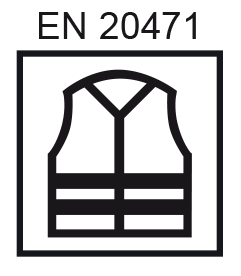
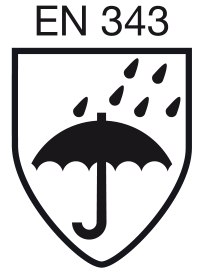
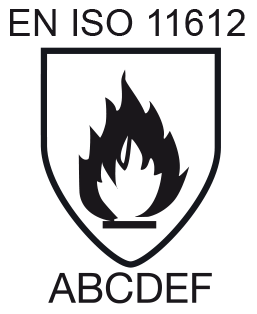
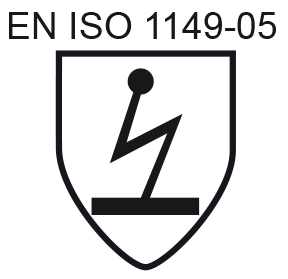
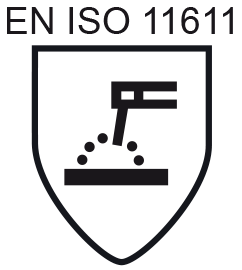
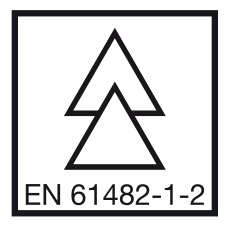
 EN 943:2002 TYPE 1
EN 943:2002 TYPE 1





